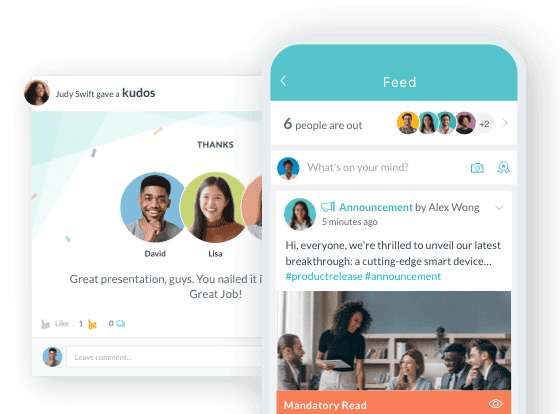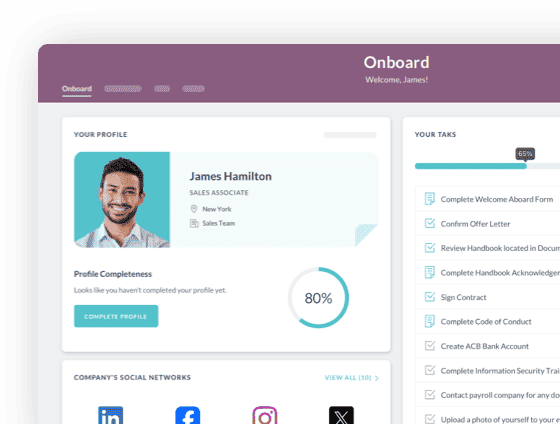
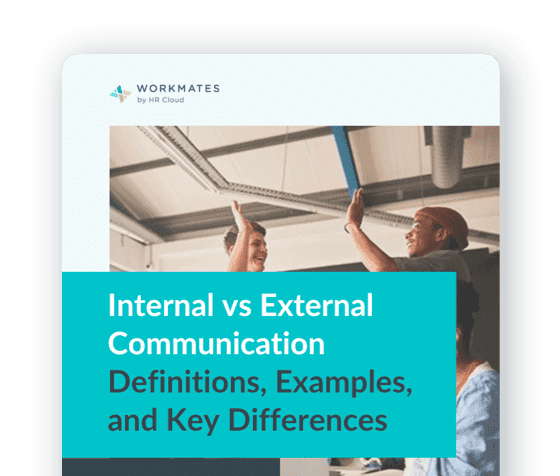
 Cut onboarding time
by 60%—here's the
Ultimate Checklist
that helped do it.
Cut onboarding time
by 60%—here's the
Ultimate Checklist
that helped do it.
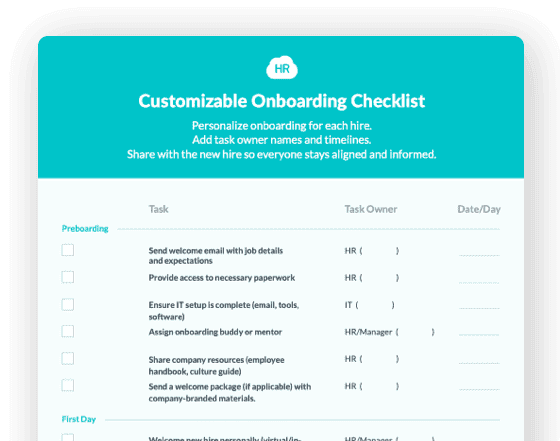
A lot of people assume that the internet, intranet, and extranet are the same, but they are actually three different types of computer networks. It’s important for those in human resources (HR) to know the differences between these networks so they can understand the business uses and security implications of each system.
Read the rest of this article to discover the definitions of each network, its uses, and how you can make full use of it in your role as a human resources manager or director.
Internet Defined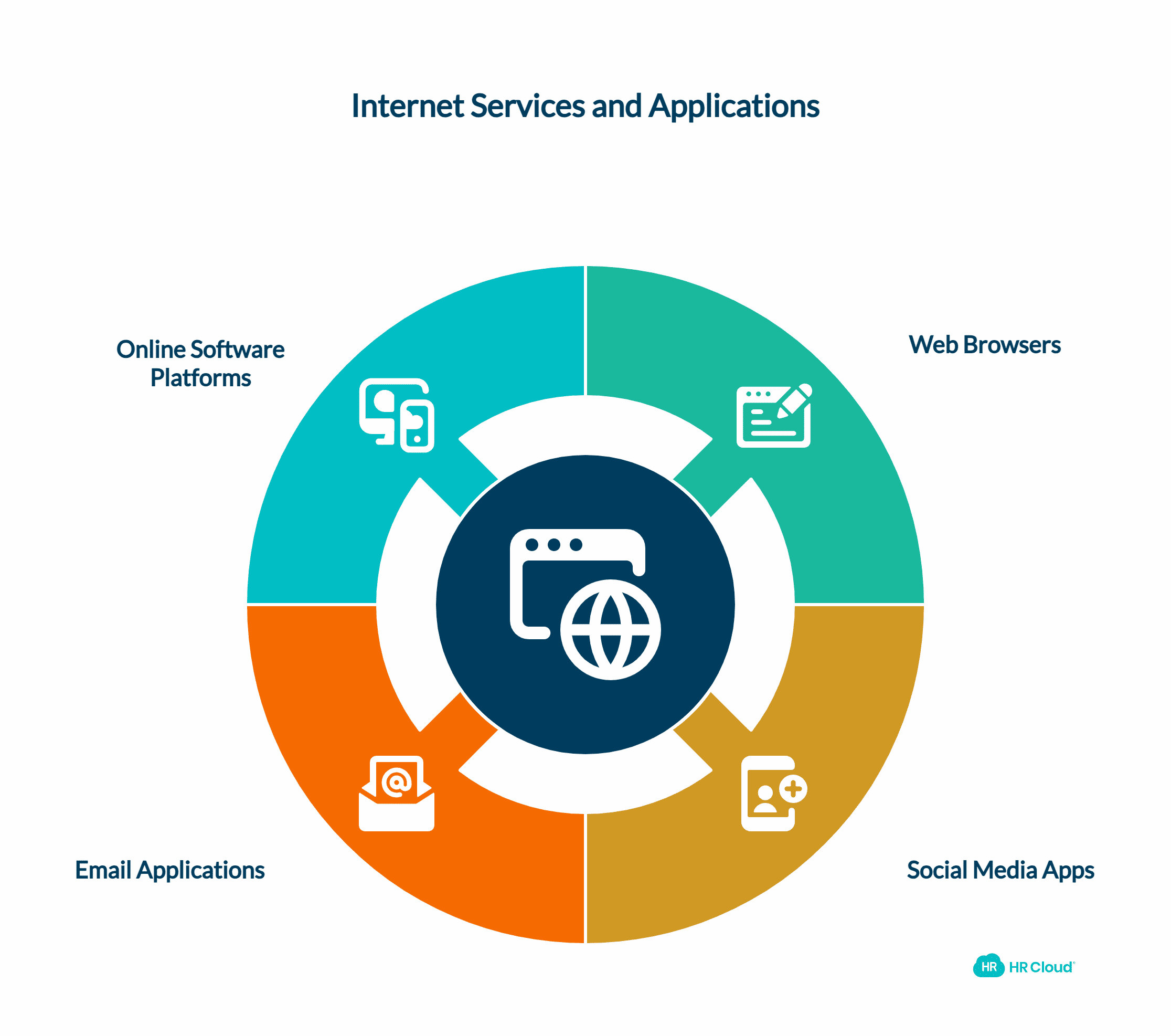
Type of Network: Public
“Inter” means between, and the internet is a connection between computer networks. It’s a publicly accessible interconnected network that allows for a range of information and communication facilities using standard communication protocols like the TCP/IP protocol.
Everything online is connected via protocols, making the internet a singular “web” of information, hence the name “World Wide Web”.
You can think of the internet as a global network of computers that anyone with an internet connection can access. This is typically done through a web browser such as the one you’re using right now. This makes the internet the largest and most expansive of all three networks.
Examples of internet services include the following:
-
The Web: You can use web browsers like Chrome and Firefox to view billions of web pages and even design and monetize your own website by coding your own site or using one of many great website builders. When it comes to choosing between Firefox and Chrome, it's essential to learn Firefox vs Chrome comparison, more specifically, their features, performance, and security aspects to have seamless browsing experiences.
-
Social Media Apps: Facebook, Twitter, Instagram, and various other social media marketing platforms allow you to share videos, photos, status updates, and more.
-
Email Applications: Yahoo, Gmail, Zoho mail and other email apps let you send and receive email messages and documents online.
-
Online Software Platforms: There are many different tools for work and play that people can use to collaborate, share, play games, and interact with others across the global workforce.
HR Cloud is a perfect example of an online software platform designed to optimize the employee onboarding process.
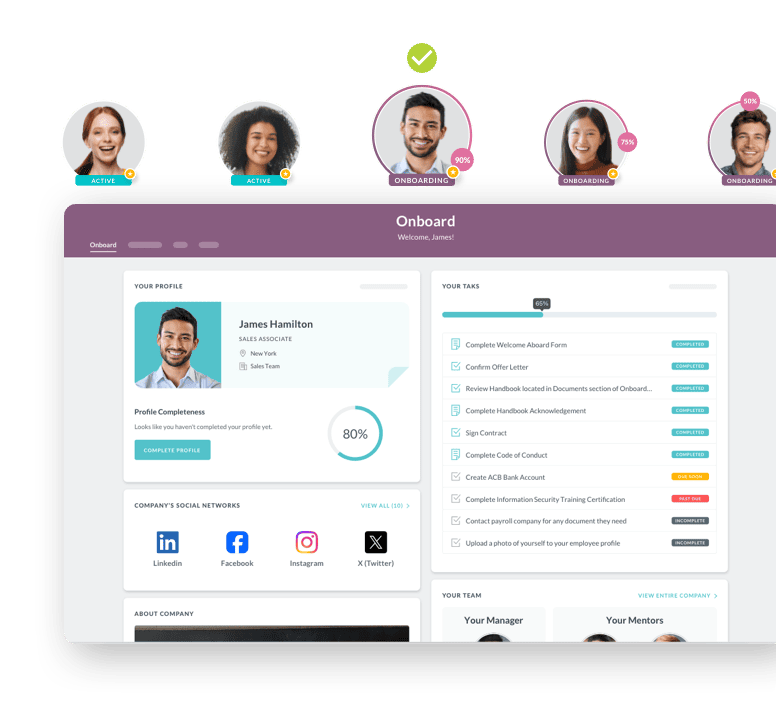

The internet, as a public network, can be a powerful tool for helping you highlight the workplace culture and encourage job seekers to apply for open positions. You can achieve this through the use of internet-based tools, such as social media, email, websites, and various others.
Here Are Some Ways To Use the Internet in Your Business:
-
Make it easier for users to locate the information they need from your website
-
Use email marketing to develop stronger relationships with staff by sending personalized messages
-
Use social media as a way to keep your employees engaged and provide them with a space for internal communication outside of work.
It’s clear to see how important the internet is for your business. But, as you well know, not all your company information should reside on the internet. That's where the other two types of networks come in handy, particularly when considering intranet vs internet differences.
Intranet Defined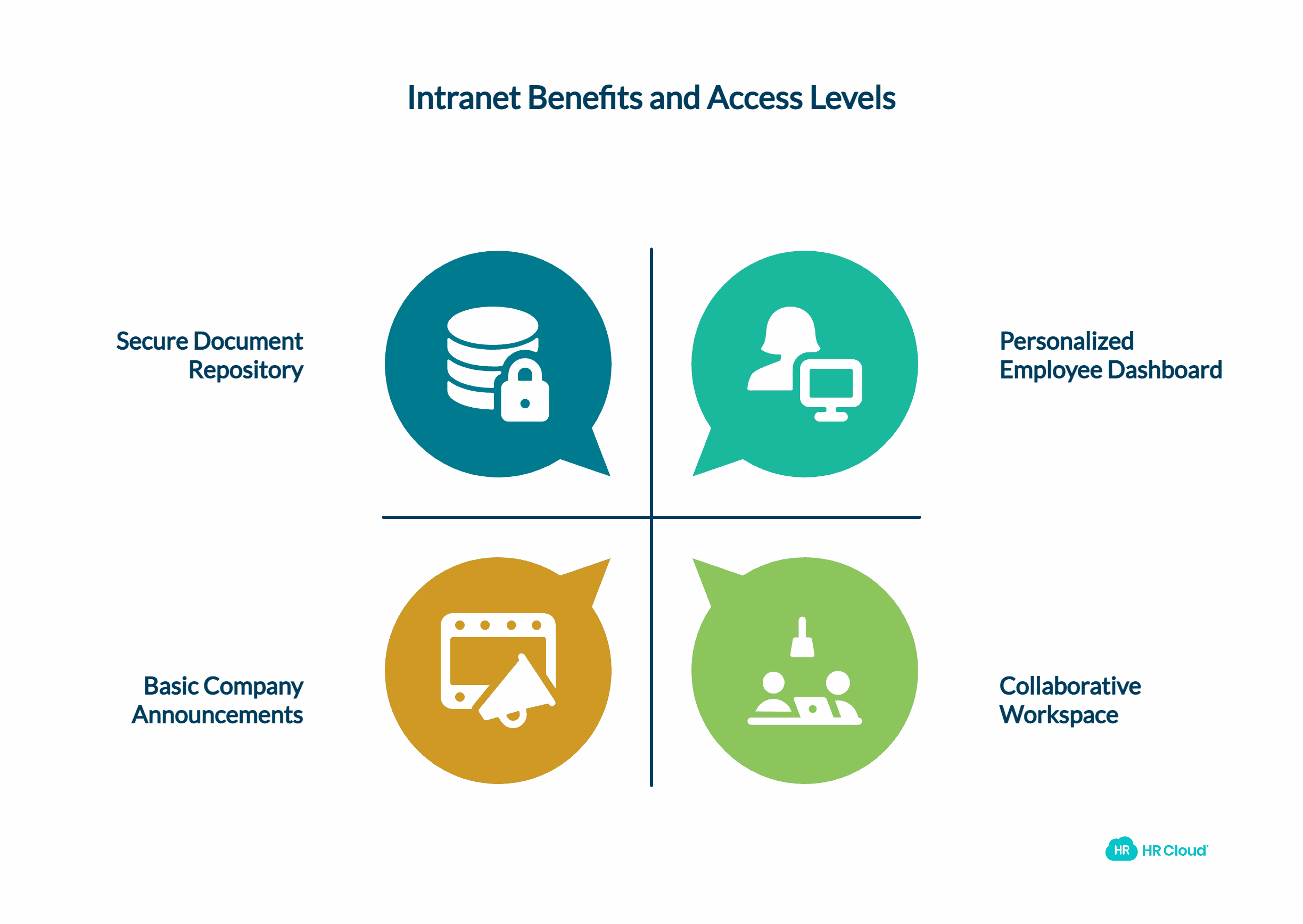
Type of Network: Private
“Intra” means within. So, what is intranet? An intranet definition would describe it as an employee-only private network that is typically accessible through the internet or a cloud-based portal, but it can also be hosted on-site.
An intranet is restricted to people within the organization for information, company announcements, and other business-related matters.
For the most part, approved access is required to view any confidential information on this network in order to keep a company’s sensitive information away from prying eyes.
Administrators assign employees a password and login details in varying tiers of permissions. Once access is granted, employees can then communicate and collaborate with colleagues, managers, and executives.
Users will also have access to documents, forms, company manuals, etc. within the scope of their given permission.
Some examples of intranets include things such as:
-
Internal social network
-
Collaborative workspace
-
Employee onboarding platform
-
Internal knowledge base
Gone are the days when a company's intranet meant clunky file management systems created by invisible IT support staff.
These days, there are plenty of modern intranet solutions designed to help businesses maintain data security and productivity while staying connected. These types of tools have grown in popularity in the wake of the recent global pandemic, with more and more people working remotely. The user experience and user adoption of these modern intranet solutions have significantly improved, making them more effective for corporate communications and employee communication.
You can use the intranet in your own business to achieve the following:
-
Save HR Costs: By creating a centralized repository in-house location for all important company resources, communications, and other needs, you can cut variable HR costs substantially.
-
Improve Internal Communications: Use a secure intranet network to give employees an easier and more convenient way to interact and receive company-wide updates.
-
Streamline Knowledge Management: Securely store and share vital company documents to help all employees (both front-line and remote) get their work done. This document management system enhances knowledge sharing across the organization.
-
Boost Productivity and Collaboration: Modern intranet tools can help your team boost productivity and collaboration by helping your team better communicate via private messages over a secure network. These collaboration tools often include features like instant messaging and task management.
As a local network, an intranet is the most restricted of the three networks but it’s extremely useful for creating multiple forms of communication between team members and mentors.
In fact, you can use your company’s intranet as a sort of digital workspace where your staff can access resources, connect with each other, follow company updates, and more.
Randstad France is an international leader in HR services and has dozens of locations across the world. With over 30,000 employees, the company has to have an effective HR intranet to allow for effective communications and collaborations.
A few years ago, the company built an intranet for connecting employees and the content is completely personalized to each user based on their business group.
Employees can sign onto their own dashboard and personalize it with their calendar, weather forecast, news, RSS feed widgets, and various integrations with third-party tools. This employee portal exemplifies the best practices in intranet design and functionality.
Extranet Defined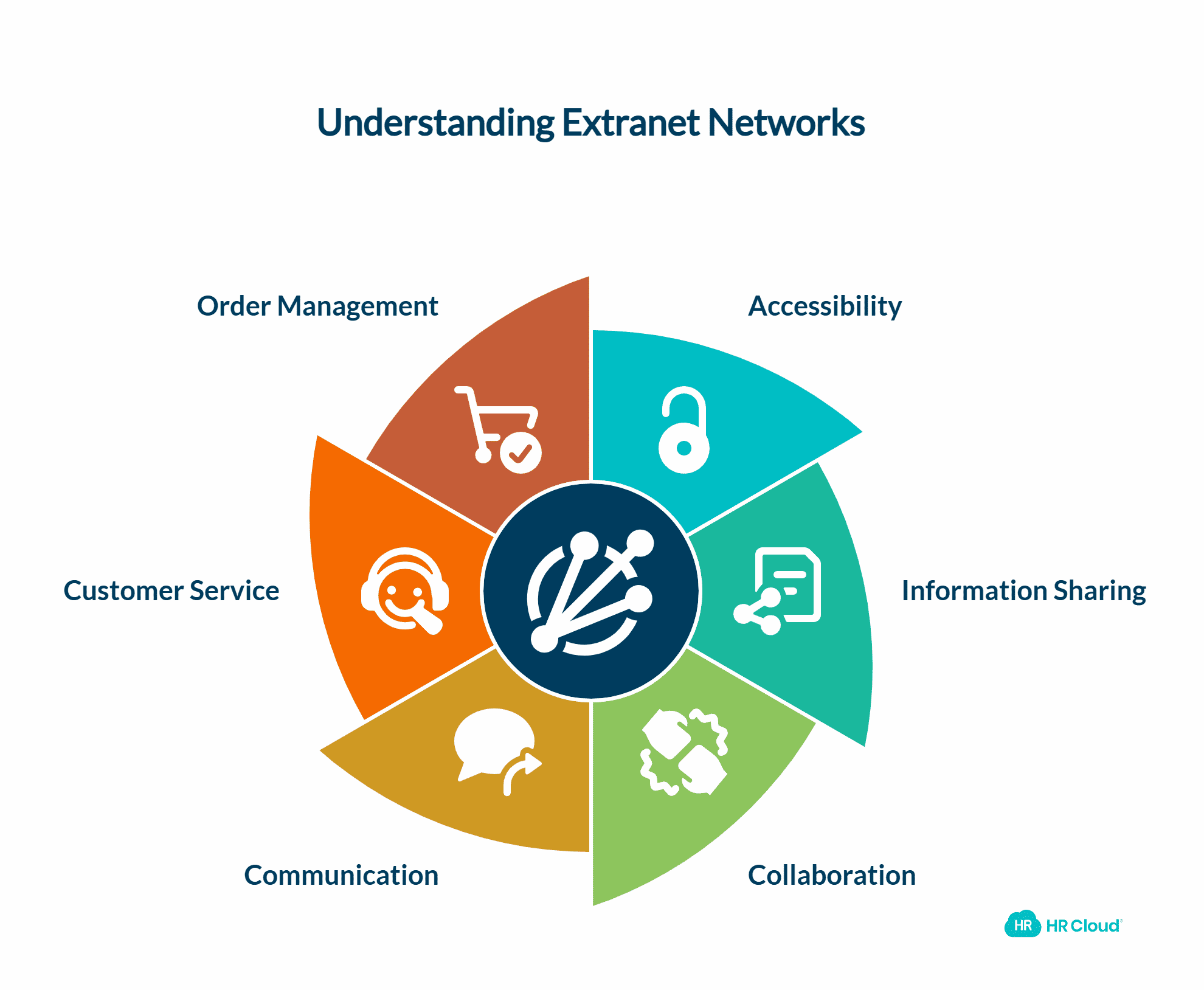
Type of Network: Semi-Private
“Extra” means outside, and the extranet is a type of network that is somewhere in the middle, between the internet and the intranet.
It’s not public, but it’s not fully private, either. It’s accessible to a company’s employees as well as some trusted outsiders, such as suppliers, partners, or customers through a web-based login.
Once approved, users can access the company’s restricted information and communicate with the business’s employees on this network.
An extranet is similar to an intranet system but less likely to contain private company information. You can think of an extranet as an extension of an intranet network.
Some of the similarities between the two platforms include the ability to share documents, particularly large ones. You can also share projects and calendars in a single, convenient location, making it easier for everyone (in-house employees, remote workers, customers, partners, vendors, etc.) to collaborate effectively.
HR directors and managers can use this network to communicate with other administrators, as well as business partners and suppliers as needed.
Examples of How Your Business Can Use an Extranet Network:
-
To give authorized users access to secure company information
-
To efficiently share and collaborate with trusted outsiders
-
Allow suppliers to communicate with the company’s customer service reps
-
Create a network that is easily accessible for third-party users
-
Allow customers to access their order history
-
Communicate price list changes instantly
-
Increase customer loyalty and satisfaction by allowing customers to get priority attention for their concerns
If a company has customers that regularly place orders from the business, they can create a secure extranet that allows users to update orders, process invoices, message the sales team, etc. - all from one convenient place.
Conclusion
Although these three networks are different, you can use all of them together to further your business objectives.
For instance, a manufacturing company might have an intranet network for its employees to receive notifications from the company, share documents, and communicate with each other.
That same company can also have an extranet where all approved wholesalers can log in to submit orders and track deliveries.
Furthermore, the manufacturer may have a website on the internet where the public can go to learn more about the business, including the products they manufacture, pricing, how to become an approved wholesaler, and so on.
Now that you know the differences between the three types of networks and the uses of each one, you can now pick the best network to use in order to keep your business's resources secure and accessible in the right place. Understanding the intranet and the internet distinction is crucial for implementing effective HR processes and maintaining a strong company culture. Whether you're focusing on employee self-service, project management, or employee benefits, the right network can significantly enhance your HR operations and overall business efficiency.
Has this article helped you understand the difference between internet, intranet, and extranet so you can determine which system is best suited for your business? Let us know below!
FAQ's
1. What is the main difference between the internet, intranet, and extranet?
Ans: The internet is a public network accessible to anyone, the intranet is a private network used within an organization, and the extranet is a controlled private network that allows limited access to external partners, vendors, or clients. Each serves different purposes and access levels.
2. Why is an intranet important for HR departments?
Ans: An intranet helps HR teams centralize employee communications, store important documents, manage onboarding workflows, and streamline knowledge sharing—especially for remote or hybrid teams. It reduces HR admin time and improves internal communication.
3. How does an extranet support external HR collaborations?
Ans: Extranets allow HR departments to securely collaborate with third-party providers, such as payroll processors, benefits administrators, and background screening vendors. It ensures timely data sharing without compromising internal network security.
4. Can HR software like HR Cloud integrate with an intranet or extranet?
Ans: Yes, HR Cloud's tools can integrate with modern intranets and extranets to automate onboarding, manage employee documents, and facilitate internal and external communications, all while maintaining high levels of data security.
5. When should a company use an extranet instead of an intranet?
Ans: Use an extranet when you need to collaborate with trusted partners—vendors, contractors, or clients—without giving them access to your full internal systems. It’s ideal for securely sharing documents, tracking project status, and improving external workflows.
 Discover how our HR solutions streamline onboarding, boost employee engagement, and simplify HR management
Discover how our HR solutions streamline onboarding, boost employee engagement, and simplify HR management
About Author: This article is written by our marketing team at HR Cloud. HR Cloud is dedicated to providing powerful solutions for your HR teams and creating an exceptional employee experience. Our aim is to help your company improve employee engagement, onboarding, and to save you valuable time!
Keep Reading
10 Intranet Metrics That Matter
Congratulations! After weeks and possibly even months of hard work, you successfully
10 Unique and Engaging Internal Newsletter Ideas
Does your organization currently send a company newsletter?
If not, you could be missing
How Self-Service Solutions Improve Employee Engagement
Did you know, that 78% of companies already rely on employee self-service (ESS)?
What
Like What You Hear?
We'd love to chat with you more about how HR Cloud® can support your business's HR needs. Book Your Free Demo

Build a Culture of Recognition. Boost Engagement. Guaranteed.
Workmates empowers employees to stay informed, connected, and appreciated—whether they’re on the front line, in the office, or remote. Recognition drives 12x higher engagement.Trusted by industry leaders in every sector




Cut Onboarding Costs by 60%.
Take the confusion and follow-ups out of onboarding with automated workflows, digital forms, and structured portals—so new hires ramp faster 3X quicker.Trusted by industry leaders in every sector





